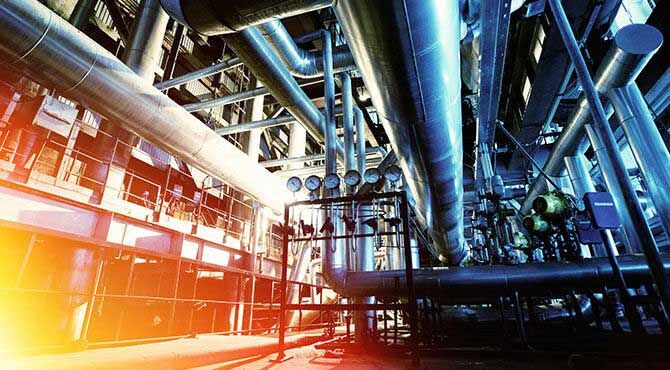Trends in the global oil and gas industry
The global oil and gas industry is facing unprecedented change. What are new technologies bringing to the sector, and how can employers ensure their workers’ skills keep pace?

Key technologies
In its Technology Outlook 2025, oil and gas industry advisory firm DNV-GL identified several technologies that would affect the industry most over the next decade. It highlighted the analysis of big data, the use of drones to inspect pipelines and oil rigs, the use of robots to automate drilling of new wells, and 3-D printing.Big data, along with the Internet of Things (a term frequently bandied around the industry at present), basically means putting to good use the information that oil companies have accumulated over the years. While drilling, these companies typically record a wealth of data, such as temperature, pressure in the well, and viscosity.The volume of information grows daily. If this data is analysed properly, it can be used not only to adjust the process of extracting oil so it is most efficient, but also to predict where there may be failures and when those failures are likely to occur.The software for analysis is created by specialist companies – or, in the case of the top oil firms, in house – but the staff capable of reading and understanding the analysis are still trained in the oil companies. As with the technologies mentioned previously, using this type of software requires both an understanding of oil and gas extraction and the ability to use new digital platforms.“The situation you have now is that, if you are in the labour market, skills you learned five years ago still serve you well, but skills you learned ten years ago are quickly becoming obsolete,” said Alexander Avanth.The situation is similar for the other technologies taking hold in the oil and gas industry. For instance, small unmanned aircraft (or drones) are being used increasingly to inspect pipelines and monitor oil platforms and onshore wells. Where previously a person had to climb outside a rig to investigate potential mechanical problems, inspections can now be done remotely, using a drone.In the case of pipelines, this means that wide geographic areas can be monitored without the need to send out crews.The skills agenda
Though its use is not yet widespread, the 3-D printing process, which uses metal powder to create a tool or a piece of equipment on the spot, is a technology that is set to impact jobs on oil platforms and remote oilfields.Until now, when a crucial piece of equipment broke on an oil platform, part of the operation could grind to a halt while a replacement piece was manufactured on shore and then flown in to replace the broken equipment.It will eventually be possible to have 3-D printers on platforms, or remote wells, and print a missing piece in situ, avoiding any stoppages.All the above technologies will require oil and gas staff to be software literate and able to work across different software platforms.“But you are already facing the problem of educating staff to be able to do it. Technology is moving so fast that, in a lot of cases, teachers are no longer up to date and are not able to teach what is necessary,” said Alexander Avanth.Some schools and universities have been quick to adapt to this new situation by setting up so-called nanodegrees. Unlike a full-term bachelor’s degree, these take only eight or nine months to complete. Providers typically guarantee that learners will be able to find work within three months of completing a nanodegree.This applies not only to young people about to enter the oil and gas industry, but also to staff with years of experience, who may need to retrain if they are to keep up.A similar process is happening across most other industries. For instance, last year US telecoms giant AT&T told its staff that it was moving its operations into a cloud. It gave staff the option to retrain at the company’s expense, but told those not interested in this option they would lose their positions.Cost cutting a priority
In its Oil and Gas Outlook 2017 report, DNV GL found that 84 per cent of the more than 700 participants it surveyed said that cost cutting would be either a priority or a high priority this year.During the oil price downturn, oil and gas companies have cut more than 350,000 jobs, and, despite the fact that prices have now stabilised at around $50 per barrel, the industry remains exceptionally cautious about new jobs and new projects.Low prices and profit losses have created an incentive for oil companies to focus on the technologies that will automate processes and allow a lower headcount.Øystein Grande, principal researcher at DNV-GL and one of the authors of Technology Outlook 2025, said that, for instance, automated drilling technology could reduce drilling costs by between 30 per cent and 50 per cent compared with a conventional rig.This kind of technology means that even when oil prices start nudging higher, companies will not necessarily reinstate the jobs they have cut.According to DNG-VL, the largest oil companies are embracing the changes more than the smaller ones, and are spending large parts of their R&D investment on automation technologies. BP is working on digitalising production platforms and plans to use specialised software to gather and process data in real time. Other top oil firms are making similar changes.The wider use of new technologies is being slowed down slightly by several factors. Labour unions, particularly in Europe, are set to fight the job losses expected to come about because of automation and the use of drones and robots. Given that the oil industry is spread across the globe, this is more likely to impact jobs in the North Sea than those in the Gulf of Mexico or Asia.Another aspect is the regulation affecting automation. In a template for what is likely to come, the European Court of Justice is debating how to regulate the use of US-based taxi app Uber on the continent, and seeking to determine whether it is seen as a transport service or a digital platform. While this has been happening, the company has stopped operating in Denmark.Similarly, the use of drones for inspection, aerial photography, surveying and security remains a contentious issue in terms of regulation.The UK has led the way here. Oil & Gas UK, an organisation representing the UK offshore oil and gas industry, recently published new guidelines for the use of unmanned aerial systems offshore.Expansion to centre on Asia
Geographically, most oil jobs will remain in the current areas of the Middle East, the Gulf of Mexico, North America, Russia, the North Sea and parts of Asia. Of all these regions, Asia is set to expand the fastest.Relocation sector surveys confirm that demand for inbound relocation is higher in Asia than in most other regions, a trend that is expected to intensify.China, in particular, is expected to play a significant role in the gas industry as it introduces a moratorium on coal-powered power generation from 2020. The country produces two-thirds of its electricity from coal at present, and, although it has made massive strides in building wind-power plants over the last two years, gas is expected to be its major replacement for coal.China only produces a relatively small amount of gas domestically. The rest has to be imported, a large proportion of it via pipelines from Russia and Central Asia.According to DNV-GL, demand for gas will require large pipeline development to secure reliable supply. The company estimates that, in the next three year, there will be a significant drive to build more onshore pipelines. This estimate is echoed by the International Energy Agency, which has said that about $9.4 trillion will be needed to build a reliable network of gas pipelines to meet global demand by 2040.Be it because of technology or because of climate change requirements, the oil and gas industry will continue to face different sets of changes over the coming decades.Read more about the latest trends in global mobility in the Summer issue of our magazine
 Access hundreds of global services and suppliers in our Online Directory
Access hundreds of global services and suppliers in our Online Directory © 2017. This article first appeared in the Summer 2017 edition of Relocate magazine, published by Profile Locations, Spray Hill, Hastings Road, Lamberhurst, Kent TN3 8JB. All rights reserved. This publication (or any part thereof) may not be reproduced in any form without the prior written permission of Profile Locations. Profile Locations accepts no liability for the accuracy of the contents or any opinions expressed herein.
© 2017. This article first appeared in the Summer 2017 edition of Relocate magazine, published by Profile Locations, Spray Hill, Hastings Road, Lamberhurst, Kent TN3 8JB. All rights reserved. This publication (or any part thereof) may not be reproduced in any form without the prior written permission of Profile Locations. Profile Locations accepts no liability for the accuracy of the contents or any opinions expressed herein.






































